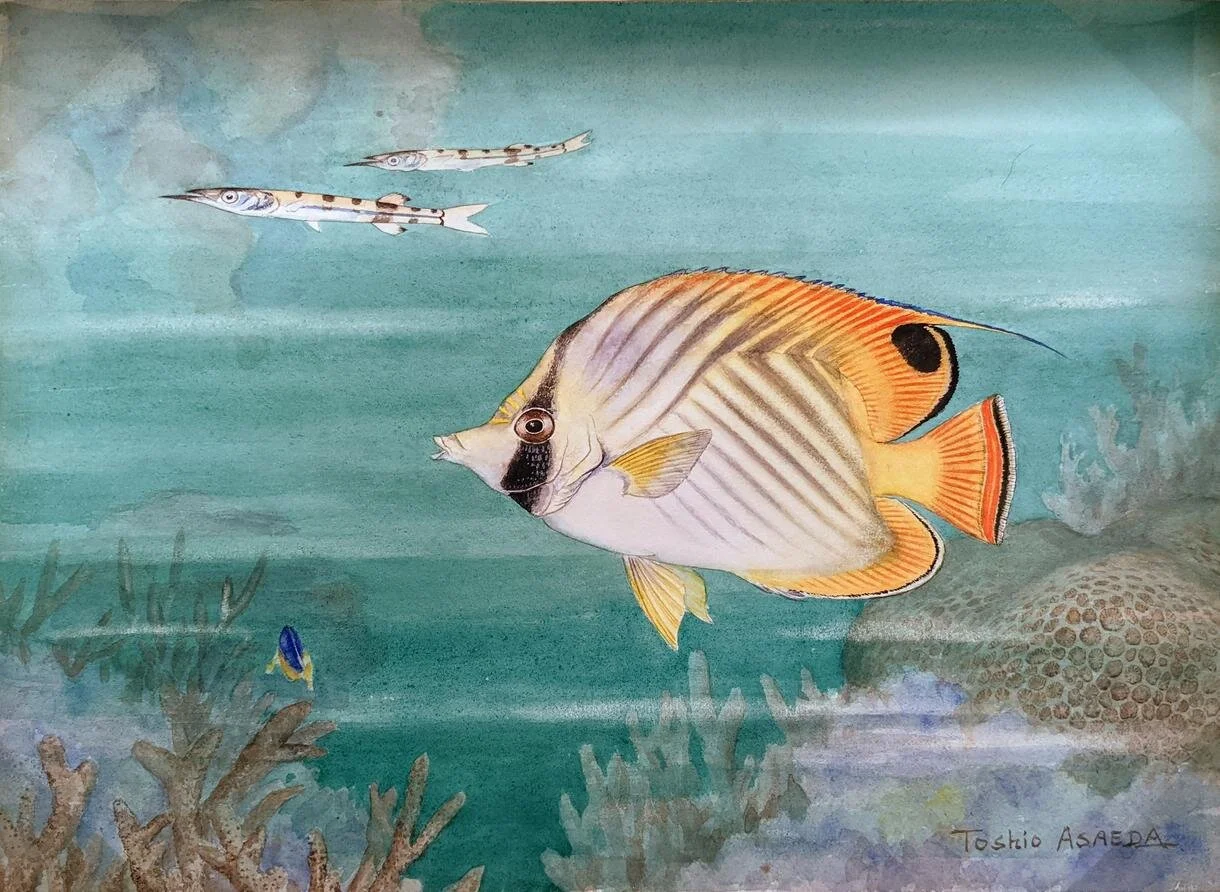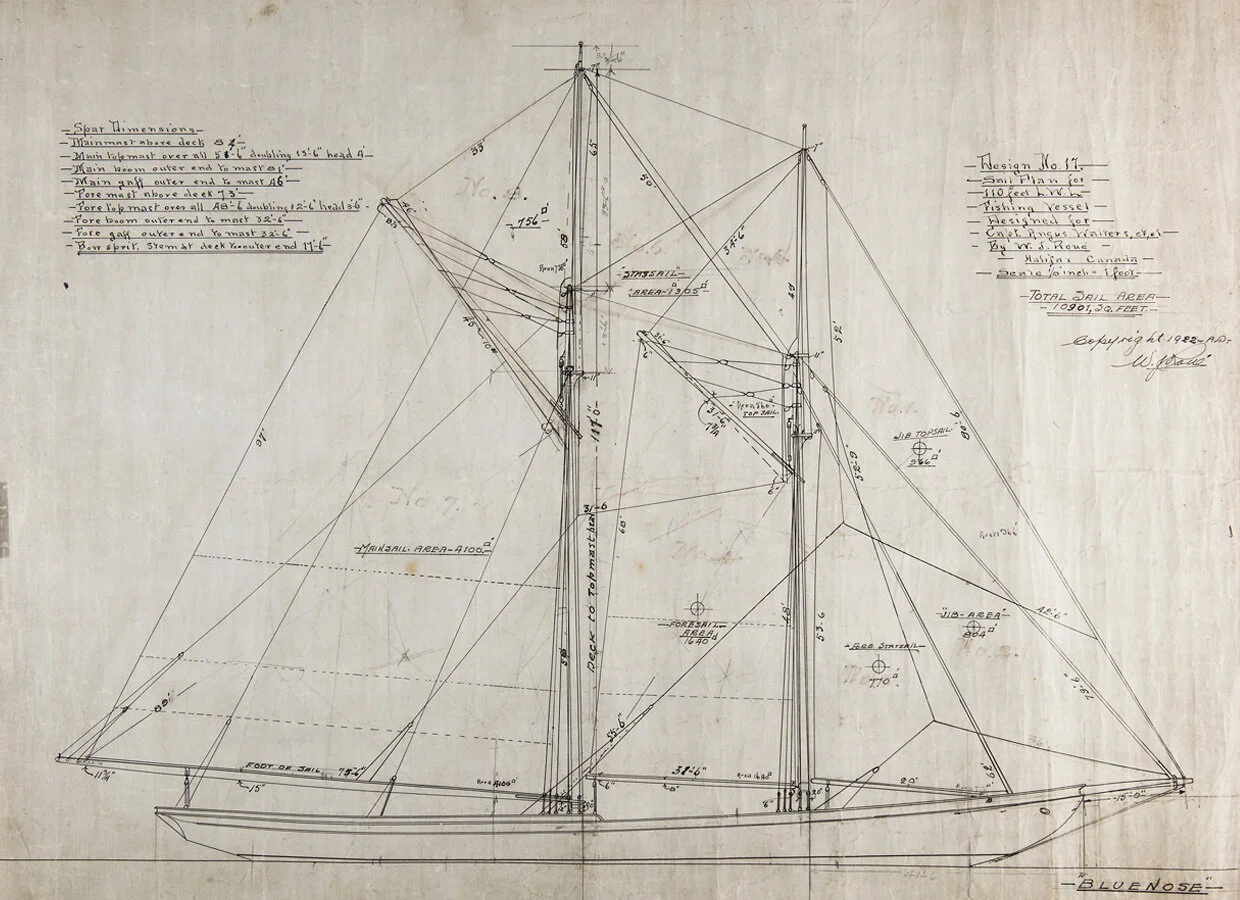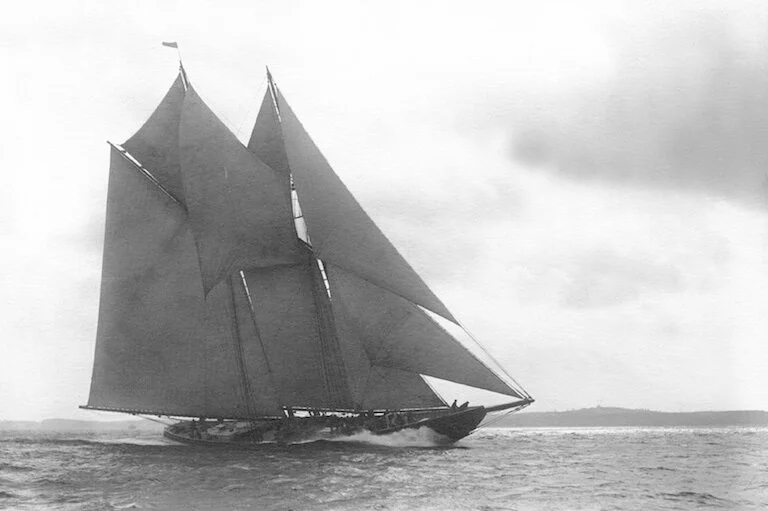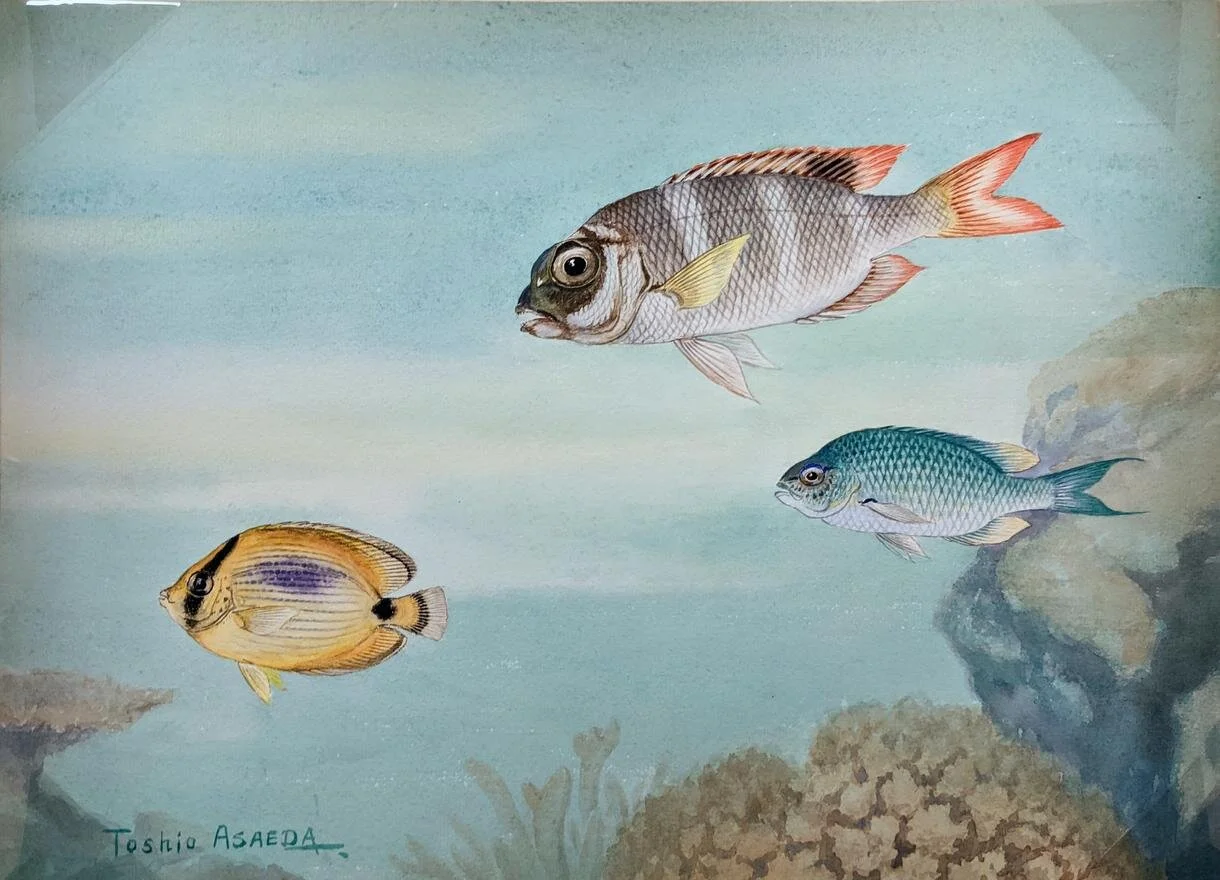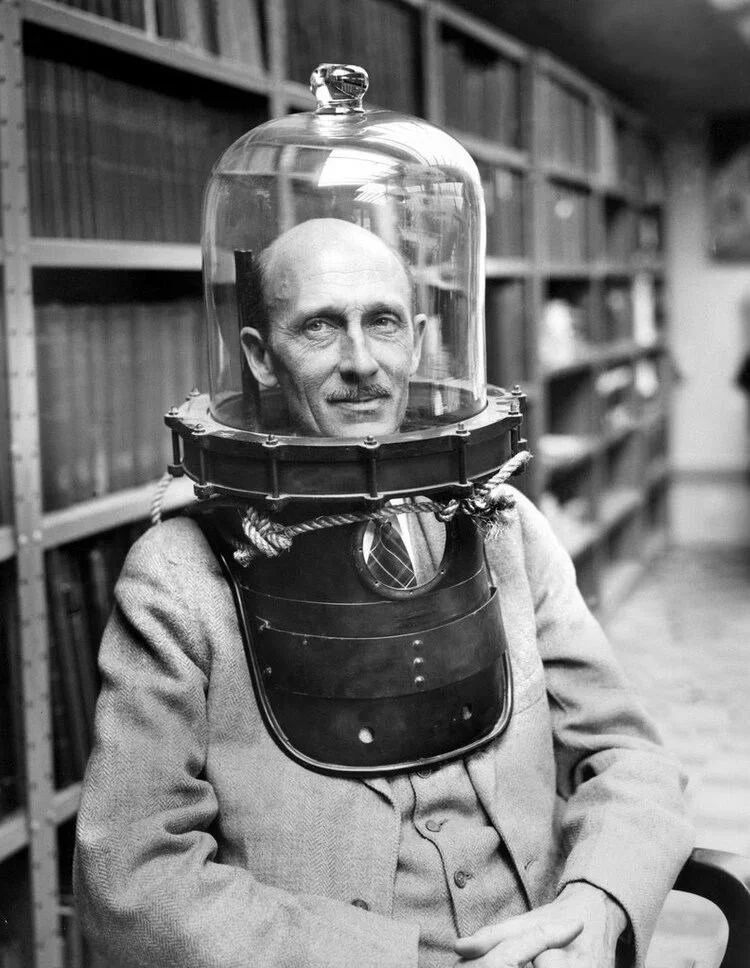ZACA & the FISH Templeton Crocker & Toshio Asaeda
While researching the elusive Errol Flynn and his yachts, see Hobart to Hollywood SWS 3rd June, we discovered Templeton Crocker, the original owner of Flynn’s schooner ZACA.
From 1929 during a global Depression Crocker, a Californian plutocrat spent his railroad fortune building and fitting the yacht and embarking on scientific expeditions across the Pacific. On these trips he was accompanied by leading scientists doing field research, collecting specimens and documenting their work.
Errol Flynn no doubt knew the scientific pedigree of the ZACA when he purchased her in 1945 at a US Navy surplus auction. His love of the ocean and marine life was inherited from his father Professor Theodore Flynn. Flynn reprised Crocker’s Pacific expeditions with the Scripps Institute of Oceanography and filmed his own Cruise of the Zaca in colour.
We have selected images from three Crocker expeditions that give you a taste of the Pacific in the 1930’s.
1930 - 31 Circumnavigation
As soon as ZACA was launched in 1930, Crocker set-out on a westerly circumnavigation from San Francisco. The Pacific route was via the Marquesas, French Polynesia, Cook Islands and Papua with long stays in the Dutch East Indies (Indonesia). While the ZACA had a two month overhaul in Soerabaya, Crocker travelled by car through Bali and Java.
ZACA in French Polynesia
ZACA anchored stern too in Mo’orea
Queen Vaeruarangi of the Cook Islands with TC
Native Canoe, Kiriwina Island, Trobriands
In Torres Strait with Chris Craft tender
Crocker published his journal of the trip THE CRUISE OF THE ZACA in 1933. For cruising aficionados, the publication has a nine page list of medical supplies and DESCRIPTION OF THE YACHT ZACA by her designer Garland Rotch, who also skippered for part of the 1930 cruise.
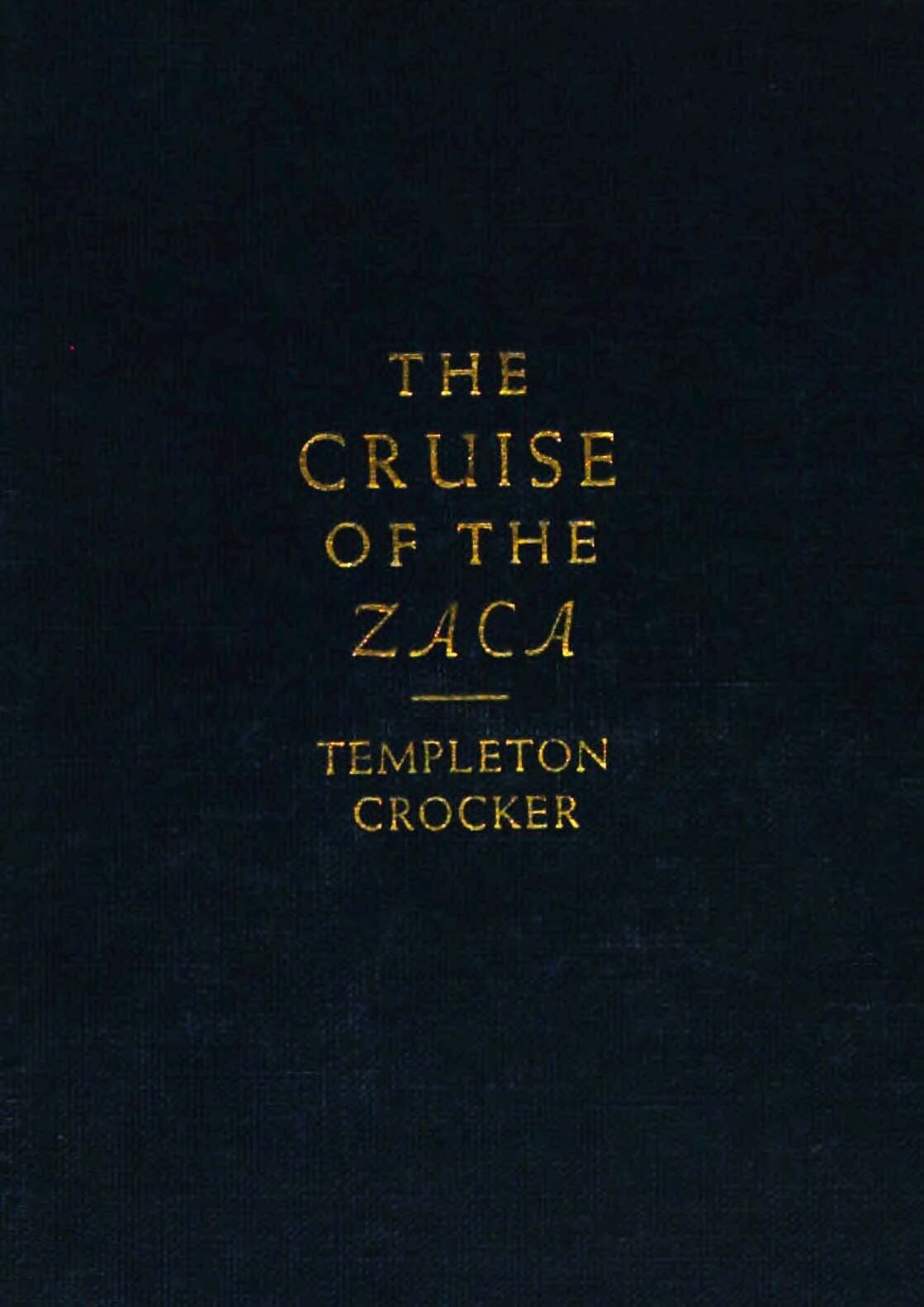
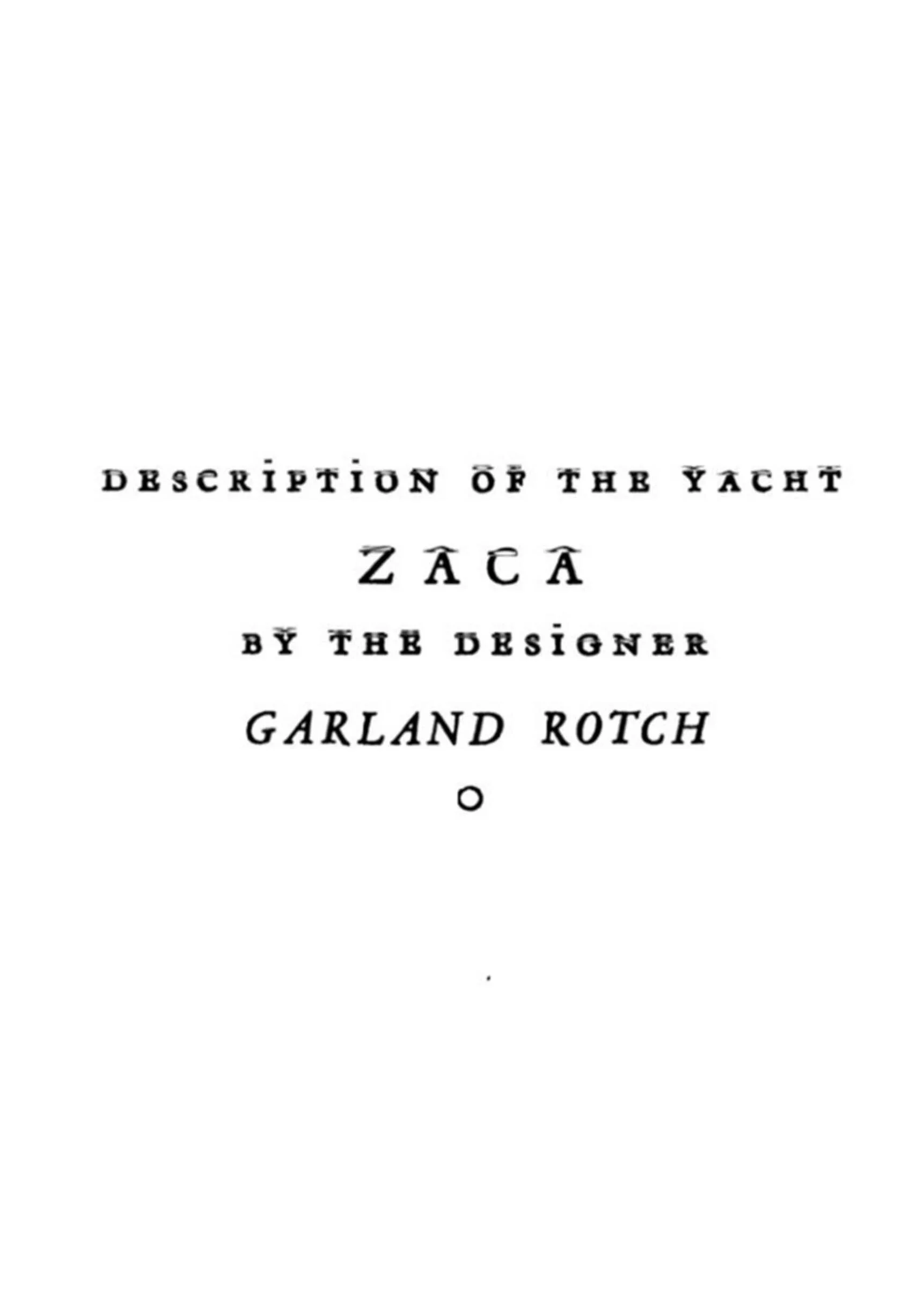
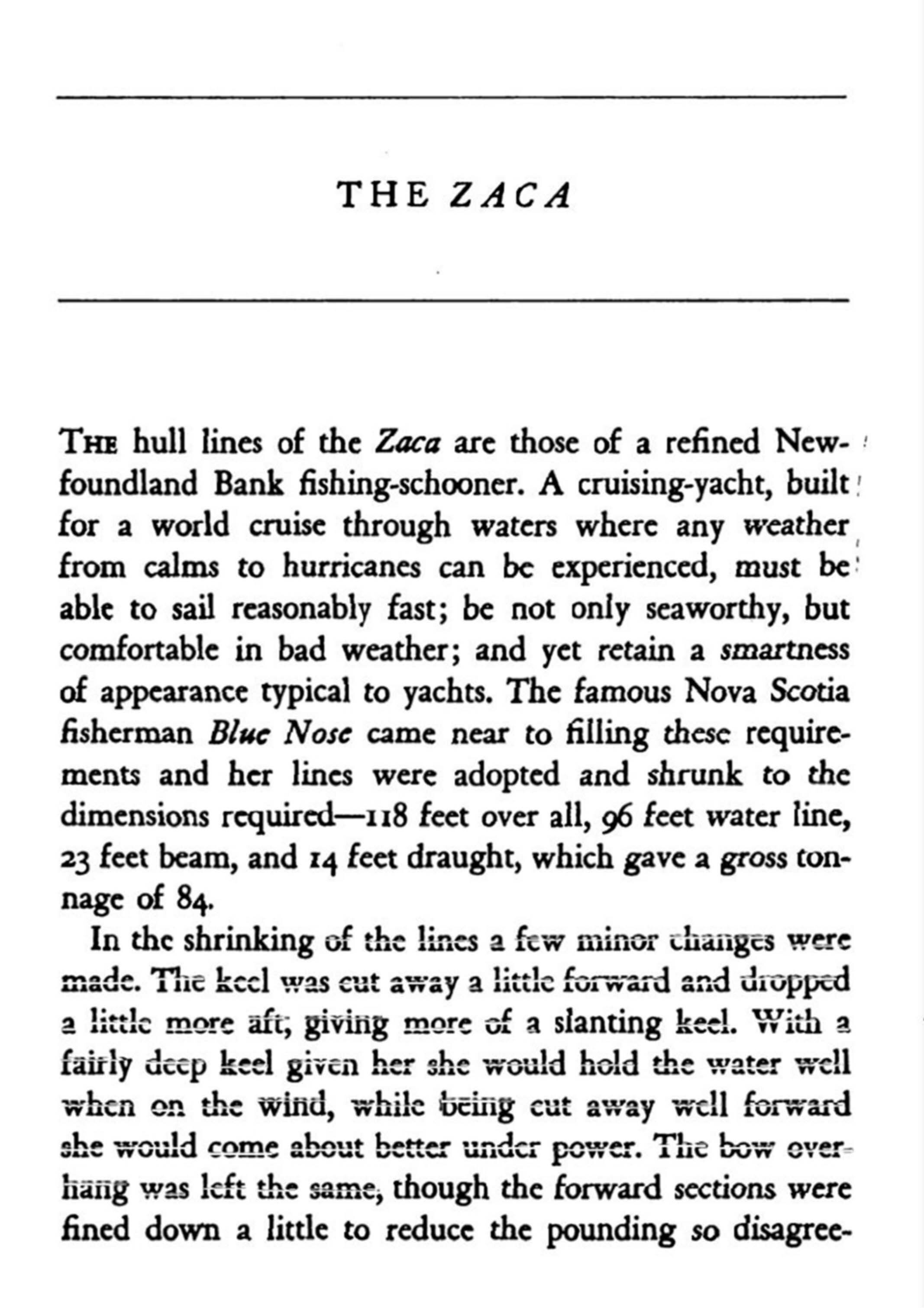


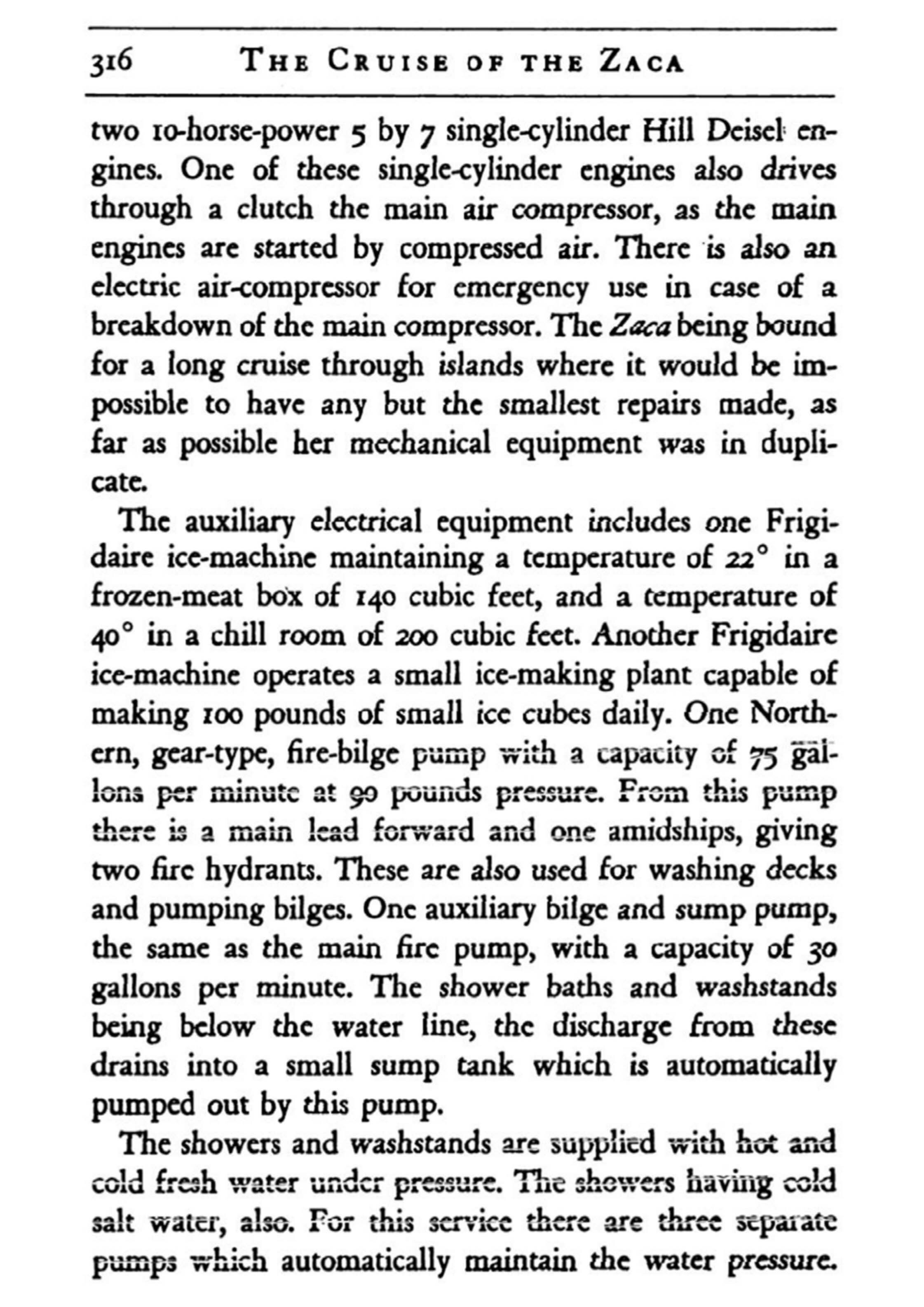
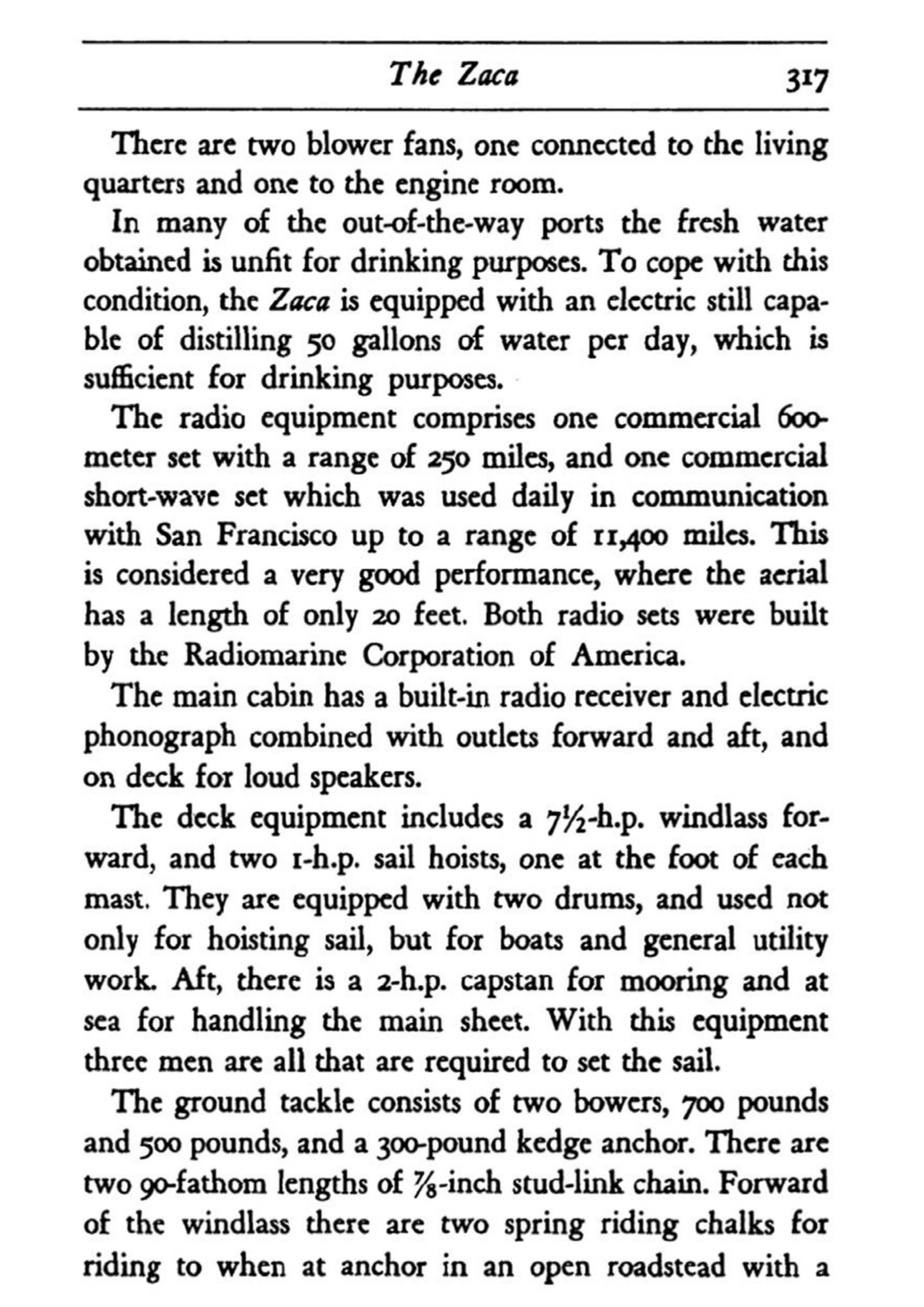
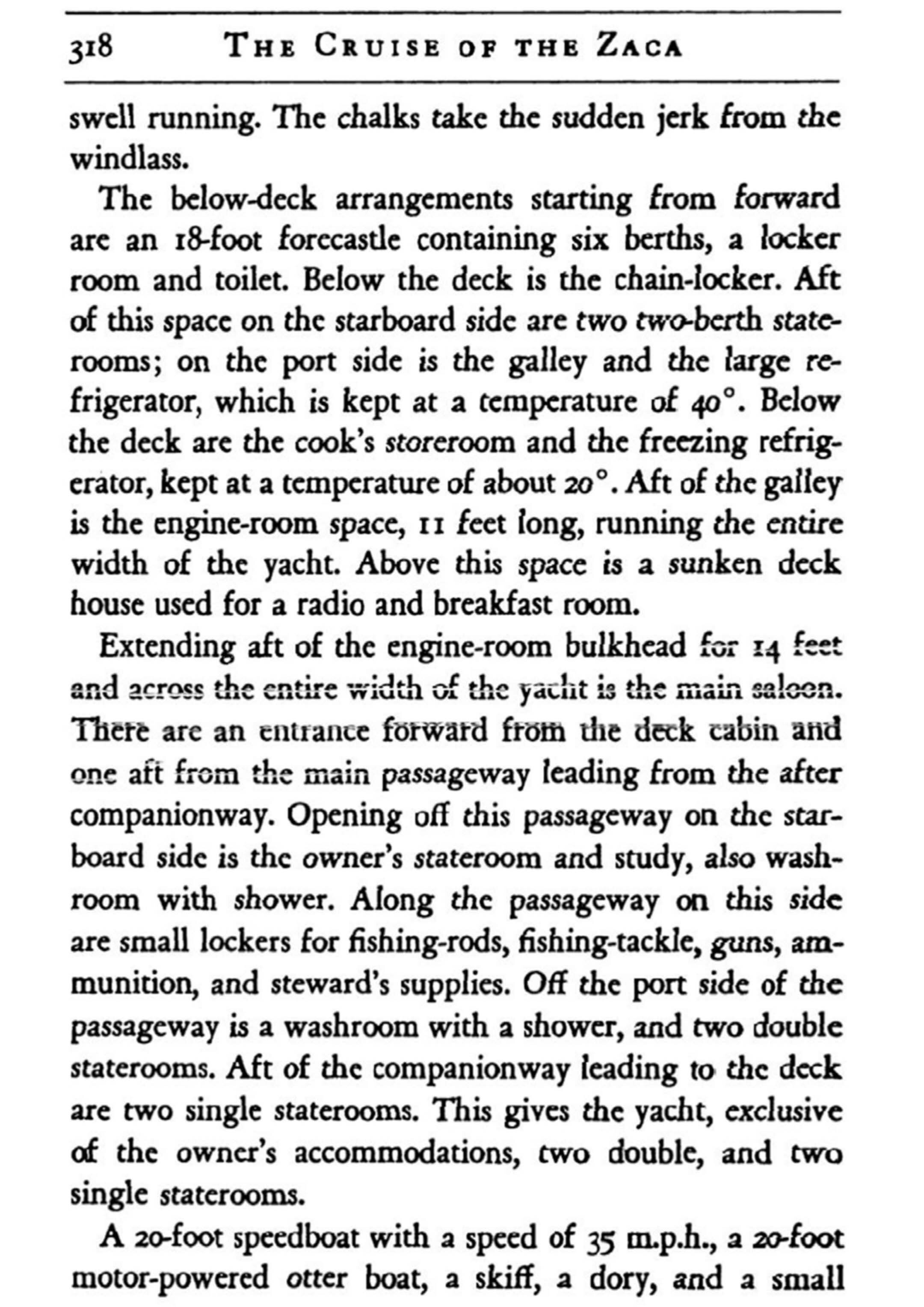
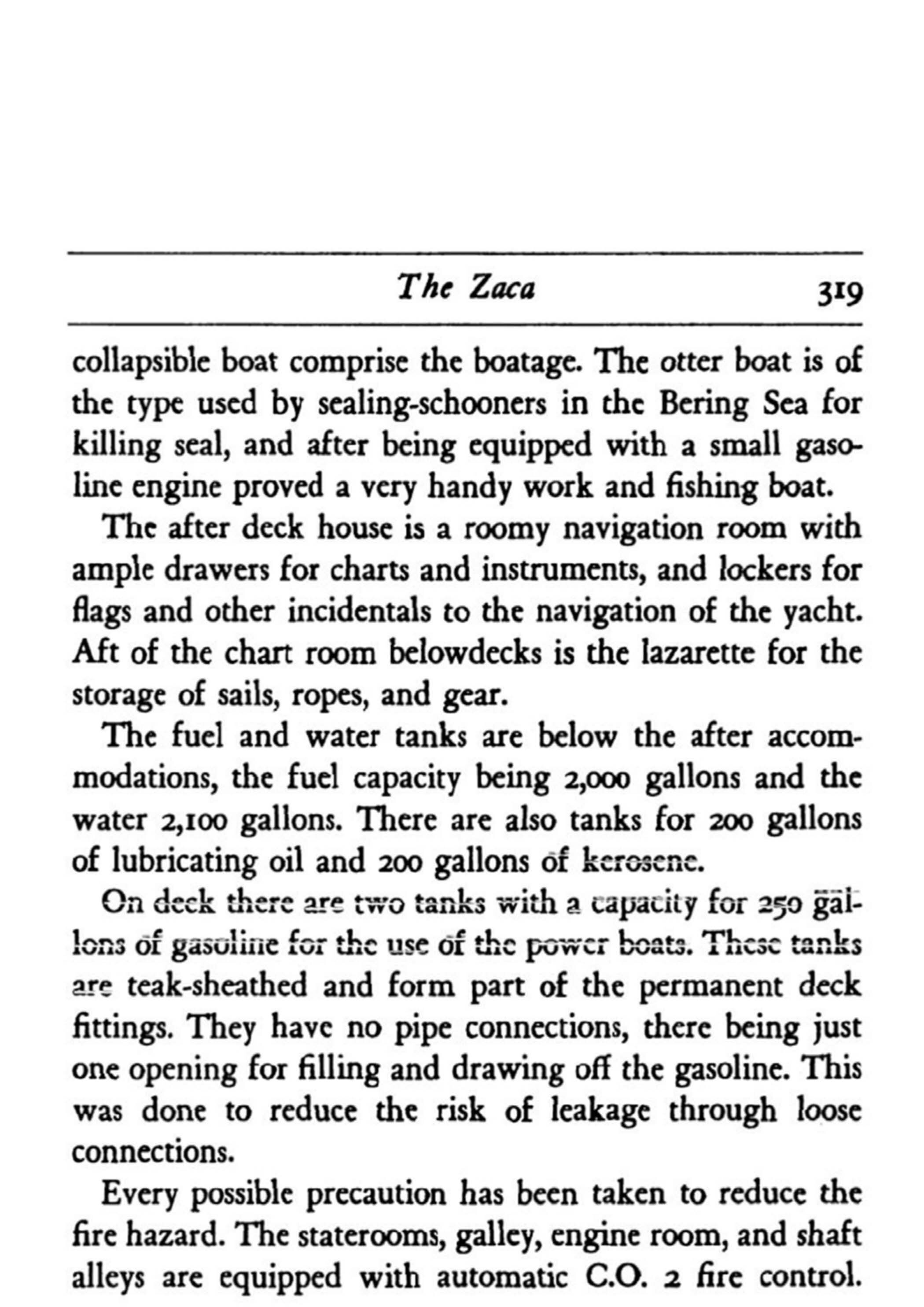
SWS cannot source drawings of ZACA but Rotch refers to BLUENOSE as the template for his design. BLUENOSE is a famous Canadian schooner designed by an unknown William Roue who spent 25 years studying naval architecture at night. She was launched in 1921 in Nova Scotia as a fishing boat to work the Grand Banks off Newfoundland. Her dimensions are LOA 143’, LWL 112”, beam 27’, draft 15’ 10” with a 10,000 sq ft sail area. BLUENOSE was both seaworthy and fast, proving unbeatable in the International Fishermen’s Trophy race. The photo below shows her still winning in 1938. A similar schooner COLUMBIA, was launched in Massachusetts in 1923 to compete with BLUENOSE. She disappeared in 1927 while fishing 200 miles off Halifax. A replica was built and launched in 2014 and is well documented on Instagram
Rigging Plan of BLUENOSE
BLUENOSE Fisherman’s Trophy Race 1938
1932 - 33 Expedition
Californian Academy of Sciences
Toshio Asaeda accompanied Crocker on all the trips from 1932. Asaeda was a trained photographer, filmmaker, artist and taxidermist. He made plein-air landscape paintings and detailed water-colours of the fish and crustacea specimens. Before Kodak and Agfa made colour film and photography a stable process, Asaeda’s coral reef fish are truly wonderful scientific documents. The sketches were made when specimens were just pulled from the water to capture the natural colours and transparency, before fading in formalin filled jars.
Crocker & Asaeda
Solomon Islands 1933
Solomon Islands 1933
1934 - 35 Expedition
American Museum of Natural History
Toshio Asaeda was again the expedition photographer. He also filmed The Scientific Expedition to the South Pacific in the yacht Zaca, you can see here. The yacht visited The Marquesas, Tahiti and Mo’orea in French Polynesia before turning east to Pitcairn and Easter Island, Juan Fernandez Islands (Chile) and the Galapagos. The trip was sponsored by the AMNH and the crew included the naturalist and deep-sea diver William Beeber, ornithologist James Chapin collecting specimens for the Whitney Hall of Oceanic Birds and the anthropologist James Shapiro who visited Pitcairn Island to study the descendants of the mutineers of the BOUNTY. Toshio Asaeda made a cast of a stone moai head on Rapa Nui, Easter Island. This work is shown in the film and is still in the Margaret Mead Hall of Pacific People at the AMNH in New York.
William Beebe, Naturalist & Diver
Toshio Asaeda Photograph of Rapa Nui Moai, 1934

